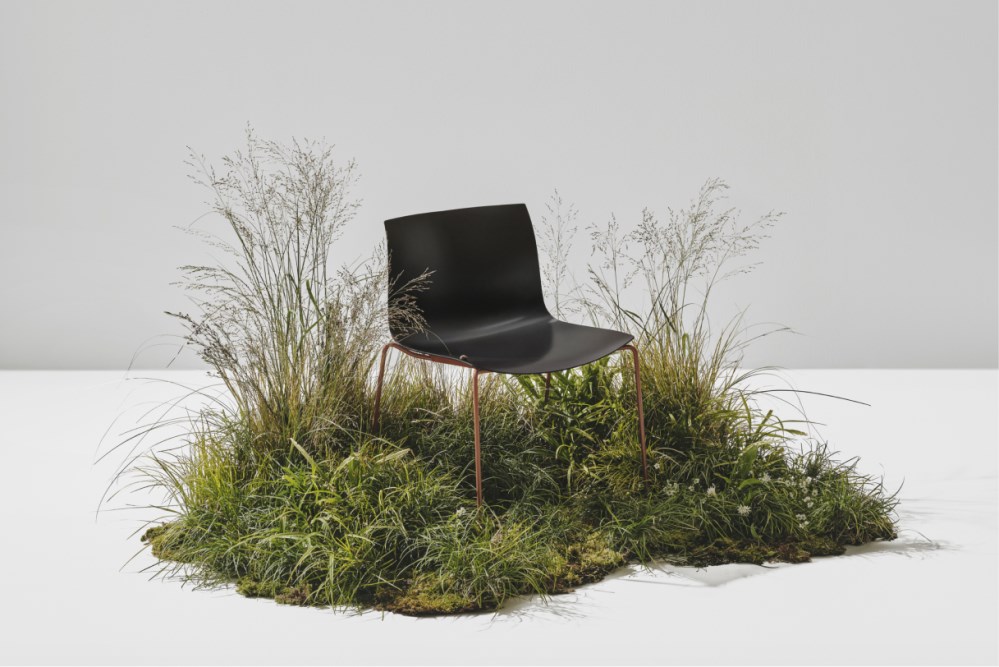London Design Festival returned for its 23rd edition, celebrating the city as a global hub for creativity and material innovation. From coffee-cup composites to textiles made from ocean-bound plastic, this year’s exhibits redefined what premium materials can be. Walking through installations, showrooms, and dedicated events like Material Matters and the London Design Shoreditch, one thing became clear: waste is the new luxury material.
The following products stood out for their innovative approach to circularity and performance, offering designers new ways to specify materials that do more than decorate.
New Life for Old Materials
Many products uncovered fresh beauty in what once went to waste. These materials reclaimed discarded resources and elevated them into high-performing, premium surfaces. Each product demonstrated that sustainable thinking can deliver striking aesthetics, whether through pigment-rich panels, endlessly recyclable acoustics, or textiles woven from recovered plastic. Together they illustrated how materials with complex backstories can still meet the demands of high-end projects.
Blast Studio's Cupsan proved that London's coffee addiction can fuel interior design. Made from the city's discarded coffee cups and sawdust, this composite material cuts like wood and machines into furniture with surprising ease. The surface feels solid and organic. Raw, it has a natural stone-like quality. Finished, it mimics terrazzo's speckled elegance. Pigments mixed during production create everything from deep ocean blues to warm terracotta. Custom colors are also possible, making sure each project gets its own material identity. For designers tired of choosing between sustainability and aesthetics, Cupsan is a great option.
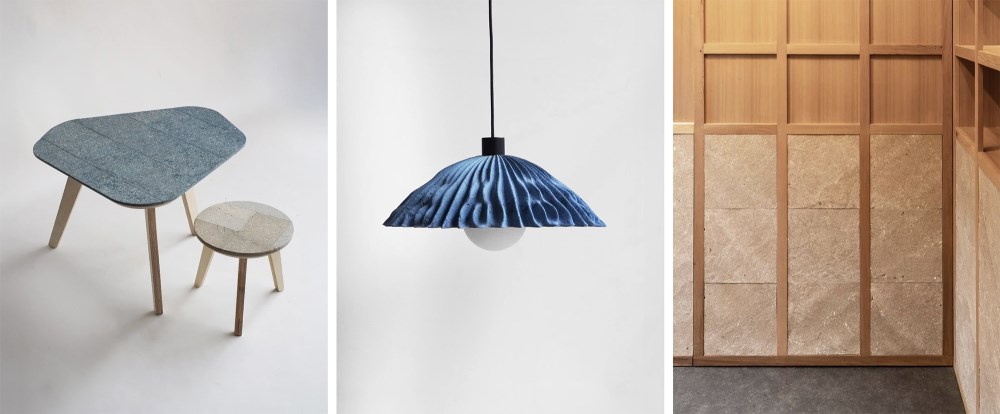 Cupsan by Blast Studio
Cupsan by Blast Studio
Impact Acoustic showed how discarded materials can become high-performance design with Archisonic Cotton. These acoustic panels start as cotton industry offcuts, material that would otherwise be discarded. The patent-pending process skips synthetic binders entirely, keeping everything natural and recyclable. The real innovation lies in the take-back program. Panels return to Impact Acoustic at end-of-life, earning designers up to 20 euro per square meter toward future purchases. True closed-loop thinking means these panels cycle endlessly through production, making acoustic design genuinely circular for commercial projects.
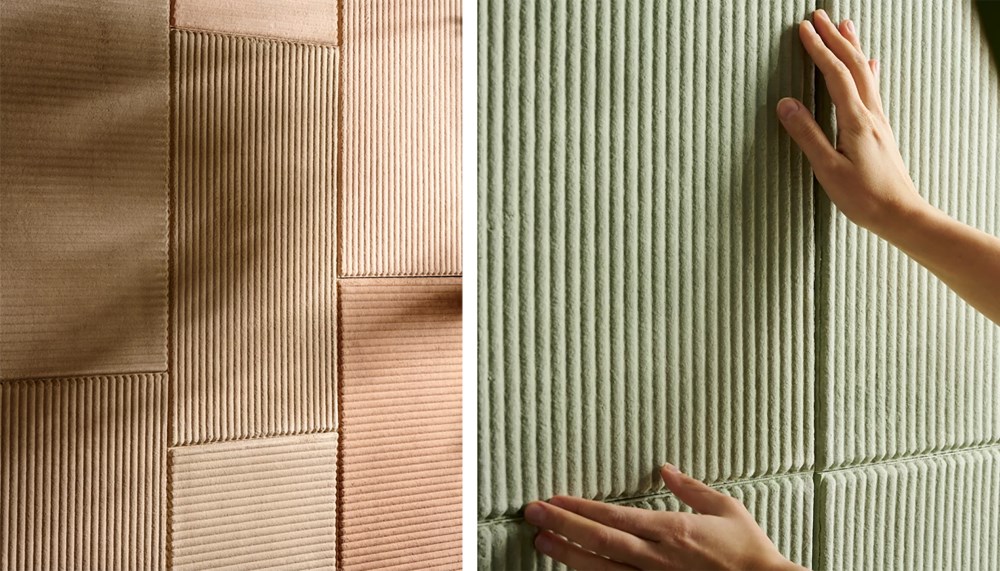 Archisonic Cotton by Impact Acoustic
Archisonic Cotton by Impact Acoustic
Kvadrat partnered with artist Kapwani Kiwanga to create Diade, an upholstery textile woven entirely from ocean-bound plastic waste. The fabric plays visual tricks. A deconstructed twill weave creates two color expressions within one surface, patterns that shift depending on viewing angle, mimicking the iridescence found in bird feathers. Fifteen shades span from vibrant sky blues and sun yellows to grounded earth tones. Each meter represents plastic pulled from ocean pathways, transformed into something beautiful enough for high-end commercial interiors.
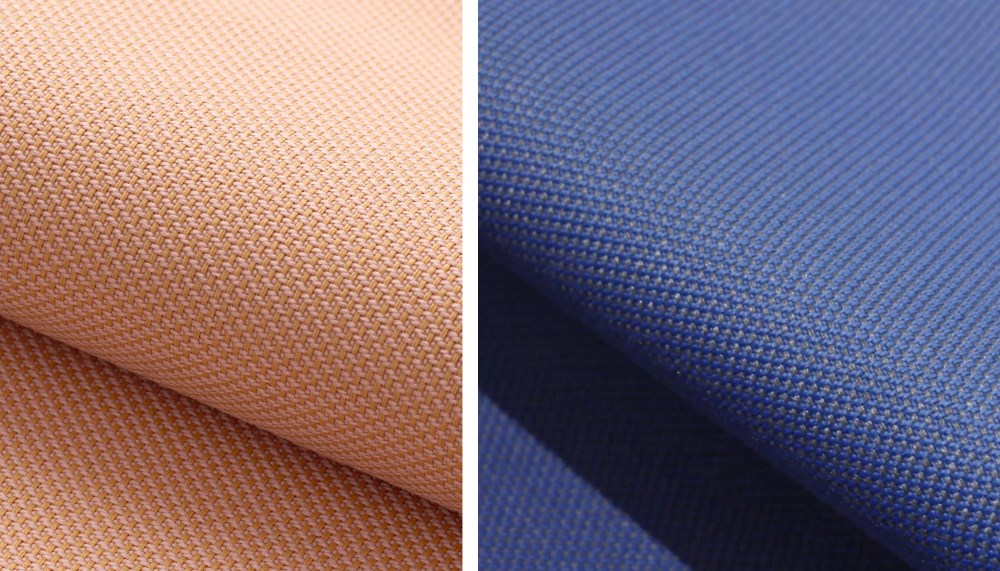 Diade by Kvadrat in collaboration with artist Kapwani Kiwanga
Diade by Kvadrat in collaboration with artist Kapwani Kiwanga
Nature as Engineer
Some materials revealed nature’s quiet engineering power, pairing renewable origins with commercial-grade strength. Their production rely on growth cycles and biological processes rather than fossil fuels, showing that performance and responsibility can share the same foundation.
Engineered Cork by Domus demonstrated how sustainability can pair with strength and style. Cork oaks live for centuries, harvested every nine years without harm to the tree. The material is climate-positive and carbon-negative by nature. Engineering processes enhance durability while preserving cork's natural warmth and resilience, qualities that make it ideal for high-traffic commercial spaces seeking both performance and environmental responsibility.
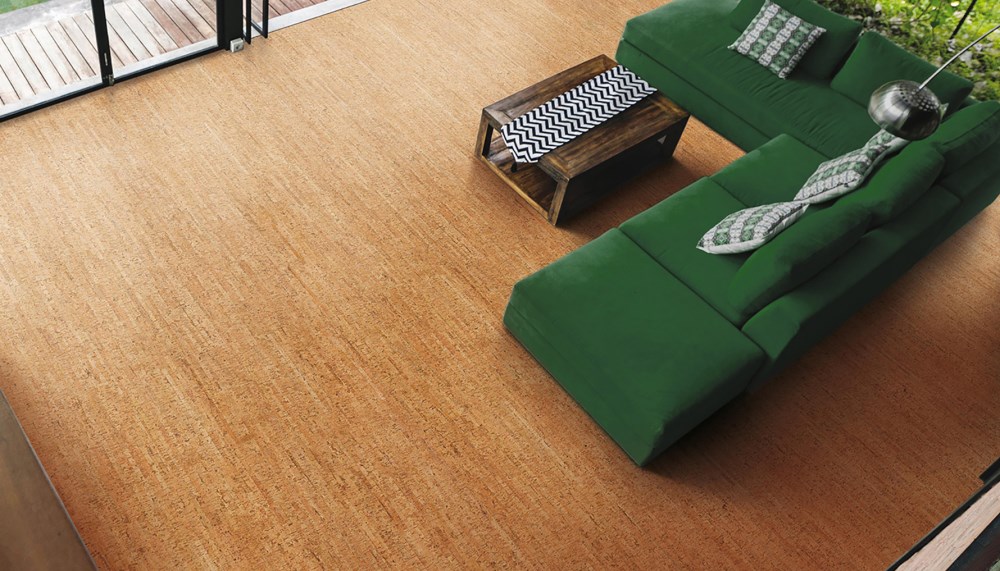 Engineered Cork by Domus
Engineered Cork by Domus
Andreu World's Nuez Lounge Bio, designed by Patricia Urquiola, showed how furniture can become truly biodegradable. The shell comes from bio-thermopolymers produced by living microorganisms, not fossil fuels. Every component disassembles easily, including recycled foam, fabric made from bottles and an FSC-certified ash wood base. Repairs happen component by component and reupholstering requires minimal effort. At end-of-life, the shell composts completely. For hospitality and office environments cycling through furniture regularly, this approach makes both environmental and economic sense.
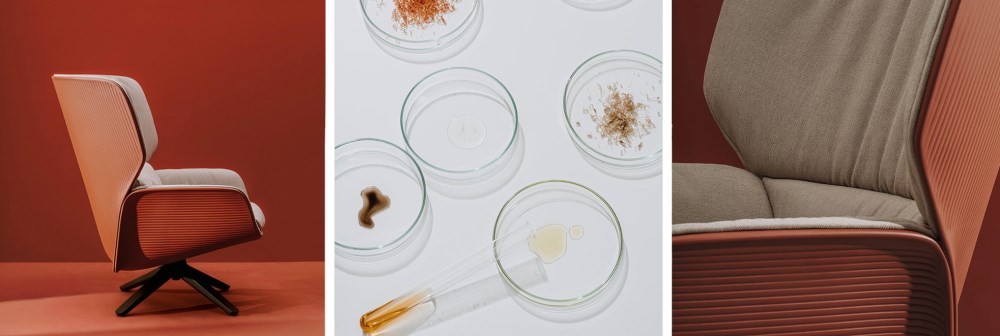 Nuez Lounge Bio by Andreu World
Nuez Lounge Bio by Andreu World
Arper revisited their iconic Catifa 53 with Catifa Carta, substituting the original material with a paper-based composite. The familiar curves remain. The lightweight feel is also here to stay. But renewable fibers now handle commercial-grade performance demands. It quietly demonstrates paper's structural potential for contract furniture.
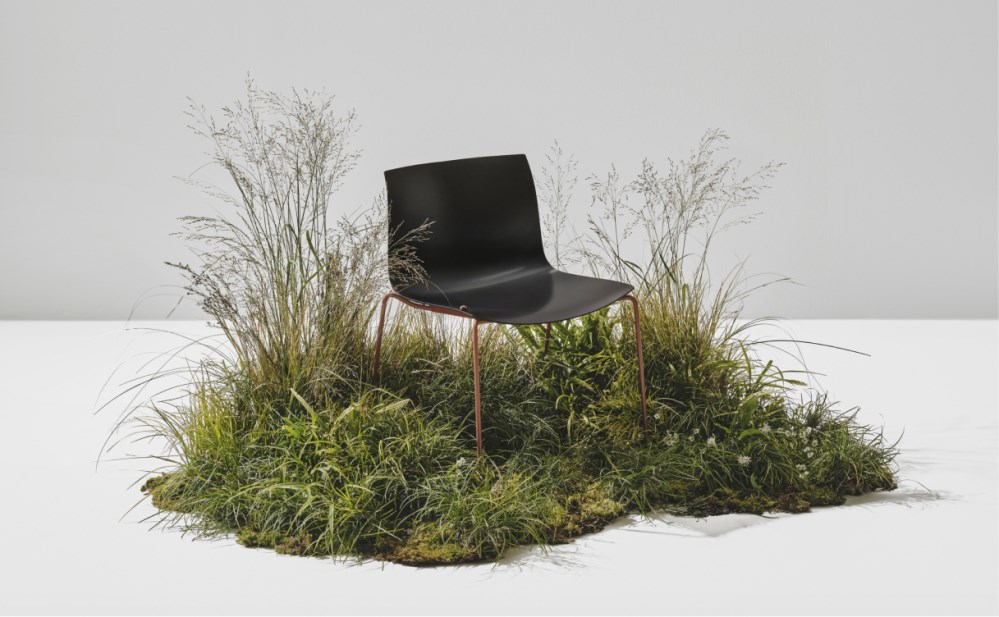 Catifa Carta by Arper
Catifa Carta by Arper
Textures That Transform
Surfaces no longer stayed in the background. These materials invited touch and created visual shifts that animated walls and seating alike, demonstrating how texture and depth can transform static planes into dynamic, sensory moments within a space.
Arpa's Tuet Deep Surface turns walls into shifting art installations. Inspired by Piedmontese reeds, the ribbed texture catches light differently throughout the day. Morning sun creates sharp contrasts. Evening light softens the ridges into gentle waves. Their new finishes open up a world of possibilities for designers. Caravella wood tones range from light to dark with a new mid-tone option. Trevi captures travertine's Roman elegance in deep relief. The Galea color range experiments with beige, ochre, pink, green, and grey, each tone intensified by the sculptural surface. For projects where walls need to be more than backgrounds, Tuet delivers dynamic movement and shifting visual interest.
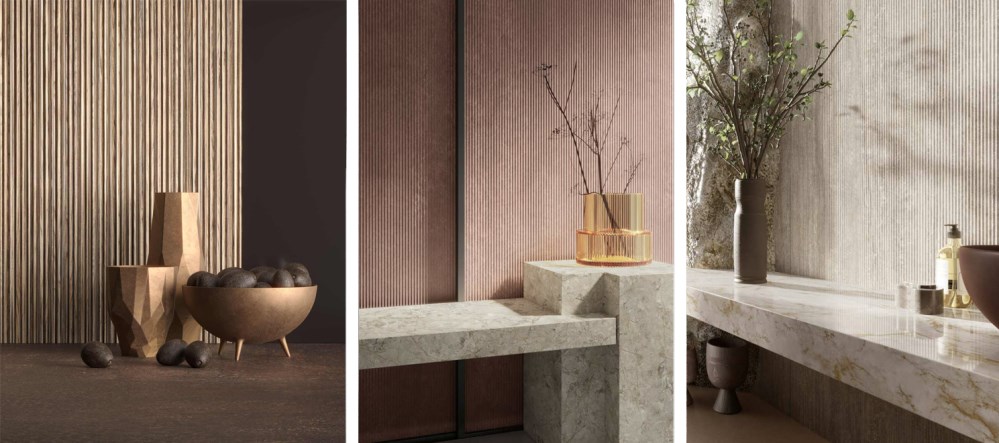 Tuet Deep Surface by Arpa
Tuet Deep Surface by Arpa
Rounding out the standout materials, Ultrafabrics updated Volar Bio with expanded colors and improved accessibility. This bio-based performance fabric combines recycled content with FSC-certified materials, reducing finite resource dependency. The matte finish feels organic and soft. Seven new nature-inspired hues bring warmth and sophistication to contract seating applications where durability and aesthetics must coexist.
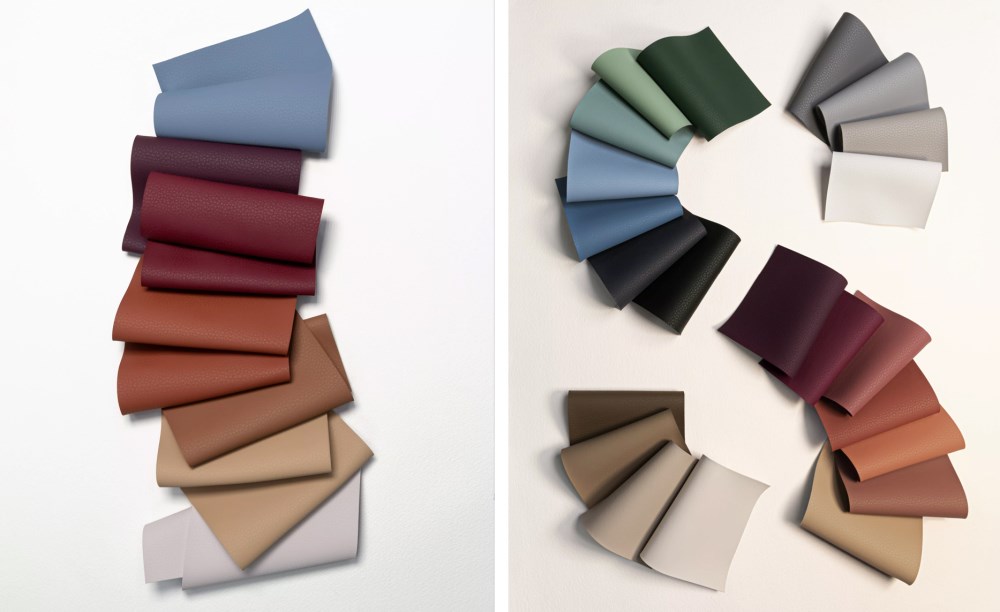 Volar Bio by Ultrafabrics
Volar Bio by Ultrafabrics
London Design Festival 2025 revealed a design community ready to embrace materials with stories. Coffee cups become architectural elements. Ocean plastic transforms into iridescent textiles. Cork and paper prove their structural worth. These innovations show how circular thinking creates products that perform better while doing less harm, exactly what the commercial design industry needs as sustainability moves from nice-to-have to essential requirement.
 Swatchbox is a premier sample fulfillment service for building product manufacturers. With proprietary software designed by insiders of the design community, Swatchbox helps manufacturers improve product sales and brand affinity by delivering material samples to the design community with speed, intelligence, and style. Learn more and join Swatchbox at www.swatchbox.com.
Swatchbox is a premier sample fulfillment service for building product manufacturers. With proprietary software designed by insiders of the design community, Swatchbox helps manufacturers improve product sales and brand affinity by delivering material samples to the design community with speed, intelligence, and style. Learn more and join Swatchbox at www.swatchbox.com.



